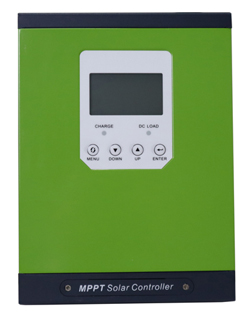The solar charge controller is a device used to control the solar panel to charge the battery and at the same time give the load control voltage to the voltage sensitive device. The solar charge controller regulates and controls the charging and discharging conditions of the battery, and controls the power output of the solar cell components and the battery to the load according to the power requirements of the load. It is the main control part of the entire solar power supply system.
What are the functions of solar charge controller?
 Load overcurrent and short-circuit protection: After the load current exceeds 10A or the load is short-circuited, the fuse is blown and can be used after replacement.
Load overcurrent and short-circuit protection: After the load current exceeds 10A or the load is short-circuited, the fuse is blown and can be used after replacement.- Overvoltage protection: When the voltage is too high, the output is automatically turned off to protect the device from damage.
- Lightning protection: In the event of a lightning strike, the varistor can prevent lightning strikes and protect the controller from damage.
- Reverse battery connection protection: The battery "+" and "-" polarity is reversed, and it can continue to be used after correction.
- Battery open circuit protection: If the battery is open circuit, if the solar battery is charged normally, the controller will limit the voltage across the load to ensure that the load is not damaged. If at night or when the solar battery is not charged, the controller itself cannot electricity, there will be no movement.
- Overcharge protection: When the charging voltage is higher than the protection voltage, the battery is automatically disconnected to charge the battery. After that, when the voltage drops to the holding voltage, the battery enters the floating charge state. When the recovery voltage is lower than the floating charge, the floating charge is turned off and enters the equalizing charge state.
- Over-discharge protection: When the battery voltage is lower than the over-protection voltage, the controller automatically turns off the output to protect the battery from damage; after the battery is recharged, it can automatically restore the power supply.
- Self-checking function: When the controller is affected by natural factors or improper personal operation, the controller can be self-checked to let the user know whether the controller is normal and reduce unnecessary man-hours.
- Recovery interval: The recovery interval of the controller's overcharge or overdischarge protection to prevent the load from jittering due to the line resistance or the self-recovery characteristics of the battery.
- Temperature compensation: monitor the temperature of the battery, correct the charge and discharge values, and make the battery work in an ideal state.
- Light control: Most solar charge controllers are used in automatic lamps. When the environment is bright enough, the controller will automatically turn off the load output; and when the surrounding environment is dark, it will automatically turn on the load to realize the automatic control function.
